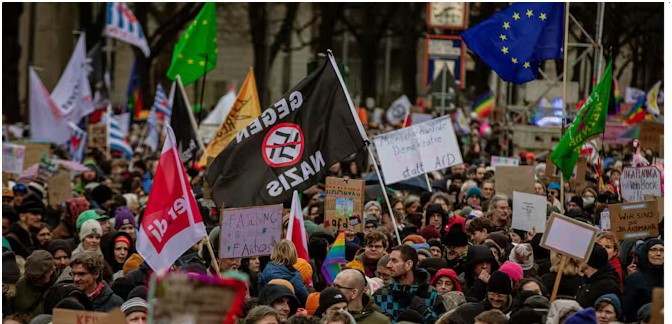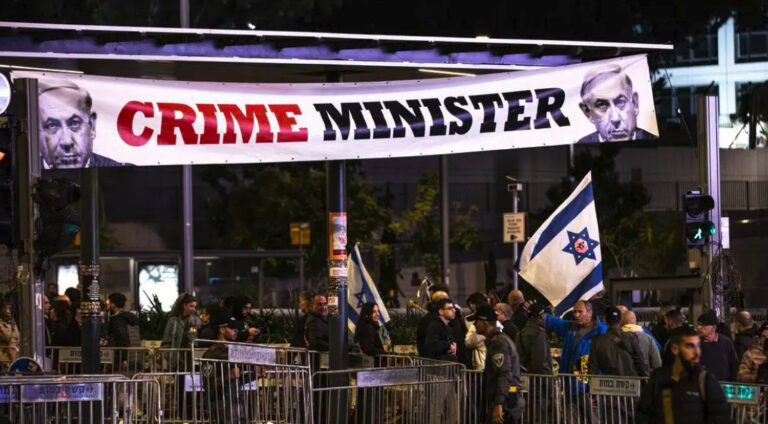
Neo Nazi (The Conversation.com)
STRATEGIC ASSESSMENT. Adorned with neo-Nazi symbols and bulletproof tactical gear, a masked attacker stabbed at least five people in an open-air cafe near a mosque in Eskisehir, Türkiye in mid-August. Five victims were hospitalized and two in serious condition in the aftermath of the attack, according to the state-run news outlet Anadolu Agency. The 18-year-old suspect livestreamed the knife attack on social media, with footage showing him running around the area and stabbing people at random before he was apprehended by police. A photograph published by the Istanbul-based news outlet Oksijen appeared to show the attacker’s weapons and protective gear, including an axe, a knife embellished with swastikas and other Nazi symbols, a mask with a neo-Nazi-linked skull, and a vest featuring the neo-Nazi “black sun” insignia.
Mirroring other so-called “lone wolf” attacks, archived versions of a Kick account, a gaming and livestreaming platform, were shared via Telegram, indicating the attack likely was originally livestreamed there. Some Turkish outlets have claimed the attack was streamed via X, and videos of the attack quickly circulated on both X and Telegram in the aftermath. A 17-page Turkish language document reported to be the perpetrator’s “manifesto” was allegedly shared by the teenager in a Telegram chat, with another Telegram user resharing the links to the manifesto and a post from the suspect with the planned time of the attack.
The suspect’s manifesto seems to encapsulate the “salad bar of ideologies,” with the document including several clear references to militant accelerationist ideology, neo-Nazism, and far-right extremist groups, such as the Atomwaffen Division. The document also pays tribute to several far-right extremist and terrorist attacks, including the 1995 Oklahoma City bombing, the 2011 Utöya, Norway mass shooting, and the 2019 Christchurch attack in New Zealand, among others. Beyond references to far-right terrorist attacks, the document also seems to support indiscriminate acts of violence more broadly, including support for general mass murder and the annihilation of the human race via “nuclear apocalypse.” Directly referencing accelerationism, the attacker states that his and other terrorists’ actions will accelerate the collapse of society and encourages others to sabotage electrical transformer stations or electrical transmission towers. Such language directly fits within the broader movement, as violent far-right extremists have increasingly targeted critical infrastructure in the West.
The manifesto not only clearly demonstrates the confluence of several ideologies on the far-right, such as accelerationism, neo-Nazism, and white supremacy, but is also how so-called “lone actors” — although they may perpetrate their crimes alone — are often immersed in and influenced by the broader radical ecosystem and far-right extremist milieu. The direct references and tributes to other far-right terrorists and their crimes highlights how these actors both learn from previous attacks and seek to mimic them – such as livestreaming an attack in progress, as Brenton Tarrant did in the Christchurch attacks – and that these perpetrators are a part of the broader far-right extremist movement, whether or not they formally belong to a group or had accomplices.
Further, the attack and the perpetrator’s manifesto also highlight both the role of online platforms in disseminating or platforming extremist propaganda, as well as the gaming-terror nexus. The fact the attack appears to have been livestreamed originally via a Kick account, which is both a gaming and social platform, coupled with gaming references in the manifesto, demonstrate this dynamic. The manifesto outlines “difficulty levels” with regard to acts of mass violence and includes a list of targets for perpetrators where large crowds gather. Different target sets were labeled as “easy,” “intermediate,” and “difficult” based on the potential level of security and opposition an attack might meet at such a space. The manifesto also awards “points” to different types of equipment that could be used by prospective attackers as well as to the type and number of victims and casualties. Such references not only fuse common gaming language and tropes with extremist and terrorist activities, but also seeks to mainstream these actions with susceptible individuals in the broader gaming community.
Rather than a new phenomenon, the influence of far-right ideology in Türkiye has been present for several years and recently been on the rise. A far-right Turkish nationalist group known as the Ataman Brotherhood, has been known to commit hate crimes and violence against migrants and refugees. In 2021, the group reportedly shared a video on social media showing one of the members beating an Afghan refugee to “commemorate” a 17-year-old girl who died after being attacked by an Afghan man. In the video, the group reportedly claimed to be patrolling the streets, and that they would continue their attacks on all refugees. This was no isolated incident, with the group having committed other hate crimes against refugees, including Syrians. The group has also posted on social media an “attack pyramid” where they list the groups they would like to target and in what order, including a “first tier” of Arabs, Kurds, Afghans, and Pakistanis, a “second tier” of Jews, Blacks, and Iranians, and a “third tier” of Armenians, Greeks, and others. In June, mass unrest erupted after allegations circulated about a Syrian man sexually harassing a 7-year-old female relative. Riots broke out in Kayseri, central Türkiye and quickly spread around the country. Rioters targeted Syrian-owned businesses and properties, further inflamed by far-right rhetoric on social media. Slogans such as “night of cleansing” and “leave or die”.
The Grey Wolves, an ultranationalistic, far-right organization, also demonstrates the manifestation of the ideology in Türkiye and the diaspora. German authorities characterize the group as antisemitic and racist, with hostile views toward Kurds, Armenians, Jews, and Christians. The organization exists throughout Europe, and Grey Wolves have repeatedly clashed with other groups, particularly Kurds. Although some who associate with the group claim that it only promotes Turkish national pride, and the government has denied accusations that the group is racist, members of the group have grown increasingly violent. Unorganized Grey Wolves have displayed weapons to communicate strength, superiority, and a willingness to fight. France banned an offshoot of the group was in 2020, and Austria banned symbols of the group in 2019.
Beyond Türkiye, far-right extremism and narratives can be seen in places such as Tunisia, Brazil, South Africa, and India. Tunisian President Kais Saied has claimed irregular migration from other parts of Africa was part of an international criminal plot to change Tunisia’s demographic makeup, echoing the white supremacist “Great Replacement” conspiracy theory. Far-right protestors in Brazil stormed government buildings and institutions in 2023 in response to former President Jair Bolsonaro’s electoral loss, in an eerie parallel to the January 6 insurrection at the U.S. Capitol. In South Africa, white supremacist narratives and conspiracy theories – stemming from the country’s history of apartheid and minority rule – have been used to recruit members to far-right groups and stoke white anxieties about racial violence. Ethnic tensions in India, such as the violence in Manipur, have highlighted the role of Hindu nationalism, which critics say has targeted minority groups, particularly Muslims, and led to institutionalized discrimination, political tensions, and violence. Such examples highlight how far-right extremism – often locally contextualized in narratives and propaganda – is proliferating in the Global South and the connections to the broader movement further underscore the growing nature of the threat.





